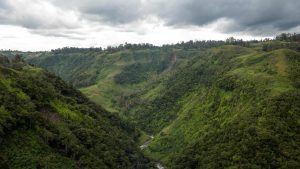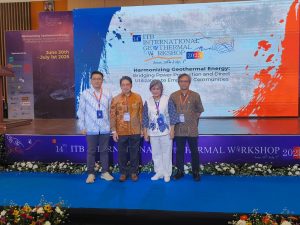Jakarta – A recent study by the Institute for Essential Services Reform (IESR) revealed that Indonesia has 1,500 locations with potential for renewable energy development, of which 333 gigawatts (GW) are considered financially viable. This finding is evidence that Indonesia’s energy transition can be more aggressive, especially with using solar, wind and hydro resources as the backbone of the future electricity sector.
The report, Unlocking Indonesia’s Renewables Future: The Economic Case of 333 GW of Solar, Wind, and Hydro Projects released by IESR on Thursday, 27 February, shows that of the total technical potential of renewable energy in 1,500 locations reaching 548.5 GW, around 333 GW is declared to meet the financial feasibility aspects based on tariff rules and project financing mechanisms that apply in Indonesia. The details include 165.9 GW of ground-mounted solar power plants (PLTS), 167 GW of onshore wind power plants (PLTB), and 0.7 GW of mini and micro hydro power plants (PLTM).
IESR Executive Director Fabby Tumiwa said this vast renewable energy potential is still not fully utilised.
“Renewable energy technology continues to develop and become more competitive. Several countries have proven that combining solar and wind power plants with battery storage systems can produce electricity at a lower price than gas or coal-based plants. This is not only a matter of reducing emissions, but also a strategy for economic growth and job creation,” Fabby said at the Renewable Energy Pre-FS Technical Report Submission and Launch of the Unlocking Indonesia’s Renewables Future Study: The Economic Case of 333 GW of Solar, Wind, and Hydro Projects.
Furthermore, IESR’s Social, Policy, and Economic Research Coordinator, Martha Jesica Mendrofa, revealed that six main regions have high potential in renewable energy development. Papua and Kalimantan are the areas with the highest solar power plant development concentration, while Maluku, Papua, and South Sulawesi are considered optimal for wind power plants. Meanwhile, West Sumatra and North Sumatra have the most significant potential in developing PLTM.
“These regions were selected based on the Equity Internal Rate of Return (EIRR) analysis, where around 61 per cent of the 333 GW project potential has an EIRR level above 10 per cent. This shows that these projects are technically feasible and attractive to investors,” Martha explained.
IESR also provides some policy recommendations to accelerate the realisation of these projects. The government is encouraged to allocate land specifically for renewable energy, simplify licensing, and set ambitious targets for clean energy development. Meanwhile, PLN is expected to accelerate the modernisation of the electricity grid to be more flexible in accommodating intermittent energy sources such as solar and wind.
Pintoko Aji, Research Coordinator of IESR’s Data and Modelling Group, who was also involved in the study, added that synergy between the government, power companies, and renewable energy developers is key to the success of Indonesia’s energy transition.
IESR also submitted pre-feasibility technical reports for three specific projects, namely one wind farm project in South Sulawesi, one pumped hydro energy storage project in South Sulawesi, and one floating solar power plant in South Kalimantan to the Directorate General of New Renewable Energy and Energy Conservation (EBTKE). Hopefully, this report can be the basis for initiating these projects in PLN’s Electricity Supply Business Plan (RUPTL). (Hartatik)
Banner photo: shutterstock














